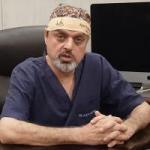Rhinoplasty is a surgical procedure intended to improve the shape of the nose. People consider rhinoplasty for two main reasons: first to improve the appearance of the nose and second to improve breathing, or even both in some cases.
Before we understand rhinoplasty, it is important to understand the structure of the nose. Nose is a pyramidal structure comprising of two portions externally – the upper one-third made up of bone, and the lower two-thirds made up of cartilage. The pyramid is supported in the middle by the septum that runs from between the nostrils all the way up to the apex.
Rhinoplasty is useful in reshaping some or all parts of the nose bone, cartilage and occasionally the skin covering. If the septum is deviated that can be corrected with Septoplasty to improve breathing.
When Rhinoplasty is Considered
Rhinoplasty is an effective surgical procedure to alter the shape, size, and/or proportions of your nose. At the same time, it may be considered to repair birth deformities or correct aftermaths of an injury or improve some breathing difficulties.
Things to Consider Before getting a Rhinoplasty
Rhinoplasty is a highly skilled procedure that needs to be done by an experienced surgeon. It is important to find the right surgeon and discuss your desires as well as your concerns.
Some of the things to consider are as follows:
Your age and medical history
Medical history is an important factor that should be discussed with your surgeon both regarding your nasal symptoms as well as general medical history. He may ask you questions like if you have a history of nasal obstruction, snoring, congestion etc. History of prior surgeries, current medications, allergies and History of smoking are all important factors to be considered. He would also be concerned if you have a bleeding disorder or if you are taking blood thinners for any reason. He may ask you stop all blood thinners for several days before the procedure to prevent excessive bleeding.
A Physical Examination
Decision about your rhinoplasty will not be finalized before a thorough physical examination, and sometimes imaging studies like CT scans. Also, in additional to your facial features and outside of the nose and the inside is examined and sometimes a scope is used to look deeper. Before the procedure, preoperative testing will involve blood tests, chest X Ray, ECG and a test for Covid.
The physical examination is an important criterion to help doctor determine the changes that need to be made. Also, it is important to assess how your facial features such as the strength of the cartilage at the end of your nose or the thickness of your skin may affect your results. Since, rhinoplasty changes the structure if your nose, it is critical to assure it is not going to adversely affect your breathing.
Photographs
Before the surgery, you doctor will get photographs of your nose from different angles. This may include 3D pictures to better plan the procedure. Computer software may also be used to develop a virtual image of your after-surgery face, which is an approximation and no one can guarantee the exact results. At the time of your consultation, it is important to discuss what you are looking for in terms of desired results to ensure that your surgeon and you are on the same page regarding the expectations from the surgery.
Post-Surgery Precautions
It is common to experience drainage of secretions and slight bleeding for a few days post-surgery or after dressing is removed. Generally, a "drip pad", comprising a small piece of gauze held by tape, is placed under your nose to contain drainage. As directed the doctor, you need to change the gauze at regular intervals.
Here are some other precautions you will have to follow for several weeks following the surgery.
- Not blow your nose.
- Avoiding intense activities like jogging aerobics.
- With bandages on your nose, avoid getting your face wet during showers.
- Consume high-fiber foods, including vegetables and fruits and vegetables to avoid constipation.
- Avoid extreme facial expressions, like laughter or crying. Normal facial expressions are fine.
You should contact your surgeon in case of fever greater than 38.5°Centigrade, excessive bleeding, pain not relieved by the pain medications or any other unusual symptoms.

 Comments (
Comments ( Category (
Category ( Views (
Views (